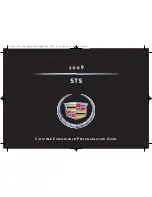
20
BODE DOORS
The door is controlled by an electric switch located in the drivers armrest panel which activates the pneu-
matic operating cylinders. Air is supplied from the chassis accessory air tank, which is pressure protected. A
minimum of 60 PSI is required in the air system for the door to work. Plug doors require an even higher
pressure before fully closing.
An emergency valve is provided in the door header cover. This is a manually controlled valve that discon-
nects the door system from the air supply while simultaneously venting the air from the door system. This
allows the door to be opened or closed manually.
Center doors have safety systems consisting of sensitive edges to protect during the closing cycle and
obstruction sensing to protect during the opening cycle. If an obstruction larger than one inch in diameter is
contacted between the panels during the closing cycle, the door system will reverse and reopen for a period
of up to twenty seconds. If an obstruction is encountered in the stepwell area during the opening cycle, the
obstruction sensing system will activate and cause the door to reclose. The door
will remain closed until the operator resets the system by cycling the door control
switch closed and then back open. Periodic tightening of the hardware is necessary.
Emergency Release Valve
If for any reason the doors should fail to cycle, there is an emergency release
valve located in the panel above the doors. This valve will enable the operator to
release the pressure on the doors allowing the doors to be pushed to the open posi-
tion.
The front door is equipped with a key lock. It may be necessary to push inward
on the door when locking or unlocking.
GENERAL DESCRIPTION
The Bode #2917 door system is designed specifically for the Blue Bird “Q” Bus. This is a two-panel push-
out door system which includes the panels, single cylinder drive plate assembly, control valves, and attach-
ing hardware.
In the closed position, the door panels are inset from the vehicle side wall. The panels are sealed with
rubber portal seals along the door opening and overlapping finger protection rubber at the mating edges.
The bottom of the panels are sealed by adjustable brushes, while the top of the panels seals against a foam
rubber seal.
The open position is characterized by the panels at a right angle to the sidewall, parallel and approxi-
mately 27.5" apart.
DOOR SYSTEM OPERATION
Each door panel is supported at two pivot points. The lower panel support consists of a spherical ball
joint mounted to the step. The top of the panel is supported by the splined drive shaft which is in turn
supported by a sealed ball bearing which is mounted to the base plate.
The header drive plate assembly (Figure 1) provides the rotary motion to the splined drive shafts and
contains the valves for the door system. A crank arm lever is connected to the top of each splined shaft. This
crank arm converts the linear motion of the air cylinder into the rotary motion necessary to turn the splined
shafts. The force delivered by the cylinder is divided by the bell crank and transmitted to each crank arm by
the respective tie rod assembly.
EMERGENCY
DOOR RELEASE
TURN TO RELEASE
















































